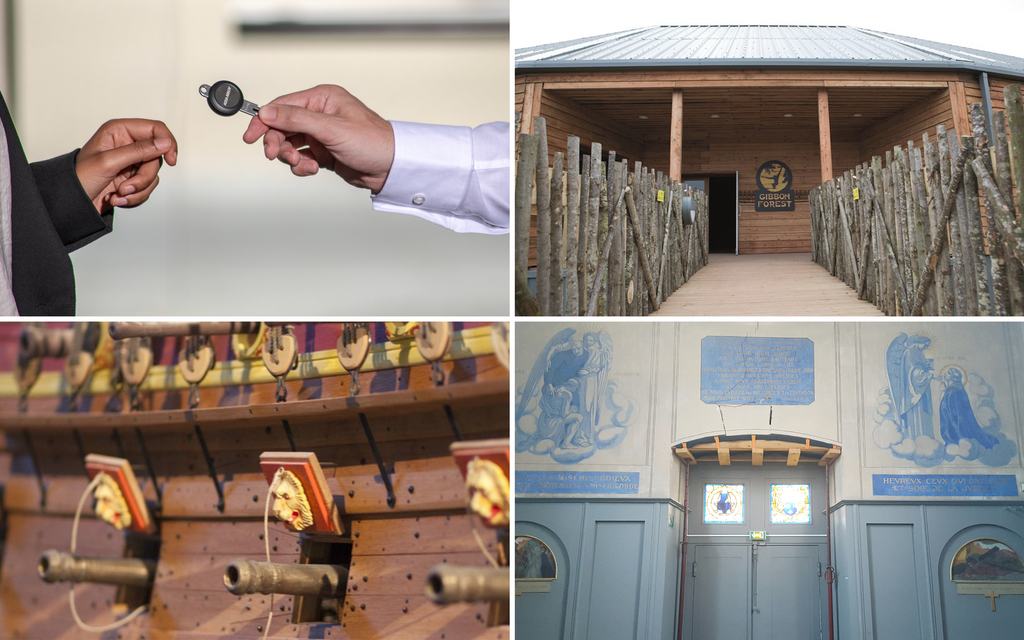
Brian Sims
Editor

Brian Sims
Editor
PLACES OF leisure are public by design. Unlike a bank vault or a power plant, they actively invite visitors and cannot be locked down. Equally, though, to ensure user and property safety, access must not be a ‘free for all’. Given that risk management is part of every site security team’s daily routine in this environment, Thomas Schulz pinpoints how intelligent locking solutions impact their workload in a wholly positive manner.
Intelligent keys combine the powerful features of electronic access control with the convenience and familiarity of mechanical keys. In hugely diverse leisure settings located right across Europe, they’re already helping facility and security managers to do more with less.
All of us treasure our leisure time. The right access solution can help us do that safely without putting a burden on those responsible for security management. Let’s take a look at this in practice.
Obviously, for many leisure attractions, wired electronic security simply isn’t an option. Locations may be remote and far beyond the reach of mains electricity supplies, while assets themselves might be located outside. Thankfully, cabling is not essential for effective intelligent access control. Robust, battery-powered locking, underpinned by intuitive administration software, can allow access from anywhere, matching or even exceeding the functionality of traditional wired access control. Padlocks built to withstand climate extremes integrate within the system exactly like standard interior locks.
Intelligent electronic key systems are also budget-friendly. Making the switch from mechanical security is not an all-or-nothing decision. The best intelligent key systems allow for a gradual roll-out as the host organisation’s needs evolve and budgets allow. For example, the Llyn Brenig Reservoir and Visitor Centre in Wales attracts tens of thousands of tourists every year1. Both mechanical and electromechanical locking protects a site which houses critical infrastructure and water sports facilities, each harbouring disparate security needs. Here, electromechanical locking brings long-term cost savings to site owner Welsh Water as locks no longer need to be changed when keys are lost. Permissions are simply deleted from the system software.
Intelligent solutions
In 2015, Twycross Zoo launched a £55 million, two-decade development plan. High on the agenda was a new intelligent key solution to replace a mechanical master key system which was labour-intensive to administer. The new system’s flexibility has put zoo security managers in full control of their site. Only staff with the necessary authority and training can now access animal enclosures.
It’s simple for system administrators to issue time-defined user keys. These can allow zookeepers or vets access to enclosures for a specific time period outside of regular hours (for example, during an emergency situation). When the defined time period expires, the key no longer works and site integrity is automatically restored.
When Edvard Munch’s celebrated painting ‘The Scream’ was stolen from an Oslo museum in 1994, thieves left a note which read: “Thanks for the poor security”2. Securing museums, themselves open spaces with priceless contents, presents one of security’s biggest challenges. According to some estimates, around 50,000 artworks are stolen every year3.
Adding further complexity, many museums are located within historic properties. The building itself may be integral to the attraction and come with strict heritage protections. Any new locking installation must be achieved with minimal mess. For this reason, the wireless route is increasingly the preferred choice.
Wireless access systems based on robust, key-operated locking, rather than cards and other keyless credentials, combine a familiar technology (ie the metal key) with the intelligence to keep staff and collections safe. Carrying one programmable key able to open doors, cabinets, windows and padlocks makes the security team’s rounds far easier. It also minimises the number of keys in circulation with the obvious security benefits that follows on from this.
Companion software renders key tracking straightforward. The security team always knows exactly who is carrying credentials, can refine or amend those permissions quickly and order a full audit trail on demand. On top of that, these locks are discreet enough to maintain the property’s appearance.
Access control in action
The on-site management team at London’s Design Museum needed an access control regime designed to protect high-value assets and exhibits. Security solutions here safeguard what is a contemporary site with three galleries, a restaurant/café and an events space. The location plays host to 100 permanent members of staff and hundreds (sometimes thousands) of daily visitors.
For its part, the building itself has multiple door sizes and must meet comply with the relevant British Standards.
Electromechanical locks now control access through 56 doors, forming part of a security ecosystem which also incorporates traditional mechanical locks. Using intuitive management software, security managers ensure every staff member accesses only the right areas. Contractors are issued with temporary programmable keys, saving valuable time previously wasted by security staff having to escort them around the building.
The chosen system also enables integration with third party cloud-based solutions for control via a single and central management interface.
Balancing act
The delicate balance between protecting a precious building and guarding its contents sets a major challenge. Security and access control must be “subtle, but ever present,” according to one former moderator of the Museum Security Network4. Invasive installation, showy or inappropriately designed devices and components cannot be considered.
This, in fact, was the checklist facing France’s Musée Maurice Denis. The museum is housed within a listed 17th Century monument. Ultimately, system installation was easy and wire-free because encrypted electronics inside the locks are powered by the standard batteries inside every programmable key. No further power supply is needed at the door.
Around 70 robust, hard-wearing cylinders and padlocks now secure doors and windows inside and outside the main building. Waterproof padlocks protect CCTV camera housings on the exterior. Every employee receives access to relevant areas via a single key, which administrators program with only the appropriate permissions.
Insurance compliance is another major concern in the heritage sector. Indeed, insurers for 17th Century warship Vasa demand Sweden’s highest level of locking: Class 3. Yet the Vasamuseet’s access system must also allow 1.2 million annual visitors to move around freely, while keeping exhibits safe at all times.
To upgrade an existing mechanical system, around 700 interior door cylinders were equipped with electromechanical technology. Museum staff used to carry heavy chains around with them hosting ten or more keys. Now, facility managers can amend the access rights of everyone’s single key at any time, even remotely, using a dedicated Web Manager. It’s simple to issue contractors with access rights scheduled to end automatically as soon as their work is complete.
Focusing on retail
According to one study completed two decades ago, we spend 87% of our time indoors5. That number is probably higher now and, of course, includes a huge chunk of our leisure time. Large retail multiplexes like Festival Place in Basingstoke are a popular destination. Here, over 170 shops, a cinema, a sports centre and restaurants have an ever-changing roster of permanent staff, cleaners and out-of-hours contractors. Every one of them requires secure entry on demand. The public also needs open access for 18 hours each and every day.
In such an environment, a single lost mechanical key could become a security problem for all users and tenants. Thankfully, the installation of 100 electromechanical cylinders has drastically cut the burden of mechanical key management.
Now, cleaners and maintenance workers carry an intelligent key which unlocks specific doors for a pre-defined time period. Using simple online administration software, site managers can immediately de-authorise and re-issue a lost key or amend any key’s permissions. Generating a comprehensive audit trail — who accessed which lock and when — takes a couple of mouse clicks. That’s all.
The chosen solution also cuts Festival Place’s operational costs. The electronics inside the locks are powered by the standard battery inside every key, not mains electricity. Installation was wireless, too, delivering a huge saving on potentially expensive electrical work.
Thomas Schulz is Product Marketing Director (EMEA) at ASSA ABLOY Opening Solutions
Sources
2www.smithsonianmag.com/smart-news/mysterious-motives-behind-theft-scream-180964531/
4www.apollo-magazine.com/what-makes-a-museum-secure
5www.nature.com/articles/7500165
To download a free White Paper on museum and heritage sector security solutions visit https://campaigns.assaabloyopeningsolutions.eu/cliq-museums

